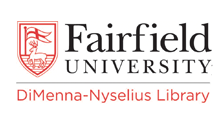Self-organization and learning disabilities: A theoretical perspective for the interpretation and understanding of dysfunction
Document Type
Article
Publication Date
2001
Abstract
Central nervous system dysfunction is common to most definitions of learning disabilities (i.e., the Individuals with Disabilities Education Act, P.L. 101–476 (IDEA), the National Joint Committee on Learning Disabilities (NJCLD), the Interagency Committee on Learning Disabilities (ICLD), although not always explicitly stated. Yet, many practitioners and diagnosticians of learning disabilities (LD) do not have a sufficiently comprehensive understanding of the neurological system to be able to interpret disabling conditions from this view. “Specific” learning disability may be an erroneous concept when one considers the underlying dynamic and recursive interactions within the neurological system. A self-organizing systems (SOS) perspective offers a comprehensive framework for understanding and interpreting the complexity of LD and suggests that classification schema tend to undermine the complex nature of the learning disorder. In this article, self-organizing systems principles are explained, and research is reviewed concerning reading and math disabilities and the roles of language, attention, working memory and executive functioning as they relate to LD. Assessment practices are also considered in light of conceptualizing learning disabilities from a self-organizing systems framework.
Publication Title
Learning Disability Quarterly
Repository Citation
Zera, David A. and Lucian, David G., "Self-organization and learning disabilities: A theoretical perspective for the interpretation and understanding of dysfunction" (2001). Psychology Faculty Publications. 43.
https://digitalcommons.fairfield.edu/psychology-facultypubs/43
Published Citation
Zera, D. A., & Lucian, D. G. (2001). Self-organization and learning disabilities: A theoretical perspective for the interpretation and understanding of dysfunction. Learning Disability Quarterly, 24(2), 107-118.
Peer Reviewed


Comments
Copyright 2001 Council for Learning Disabilities
A link to full text has been provided for authorized users.